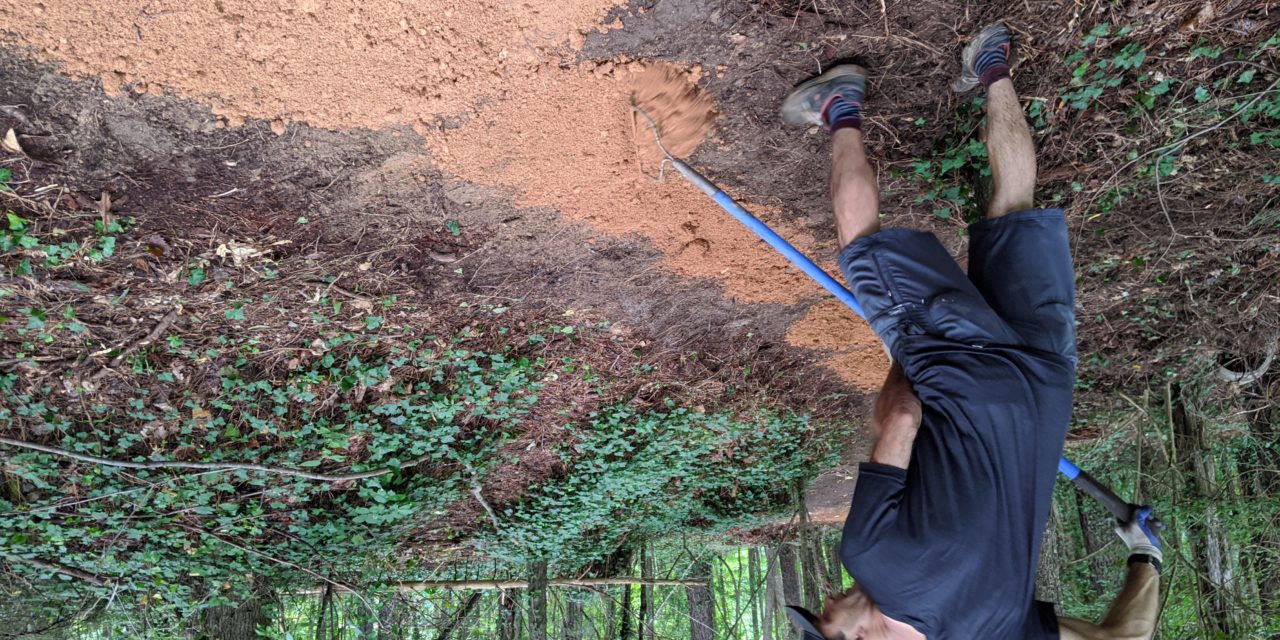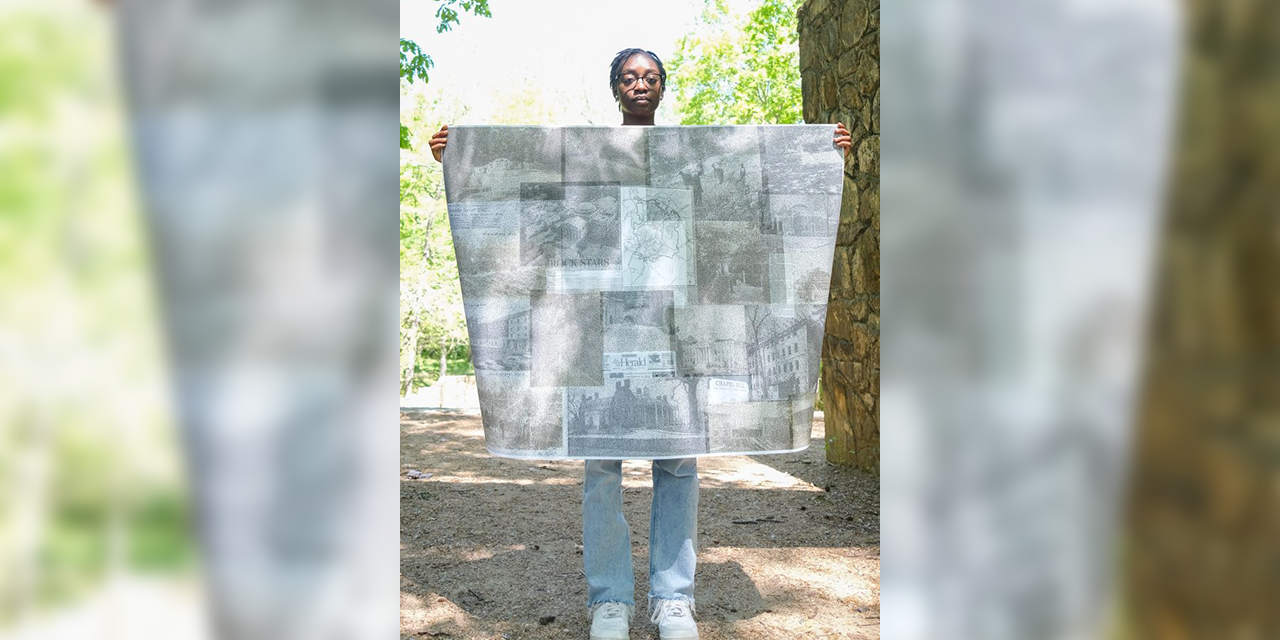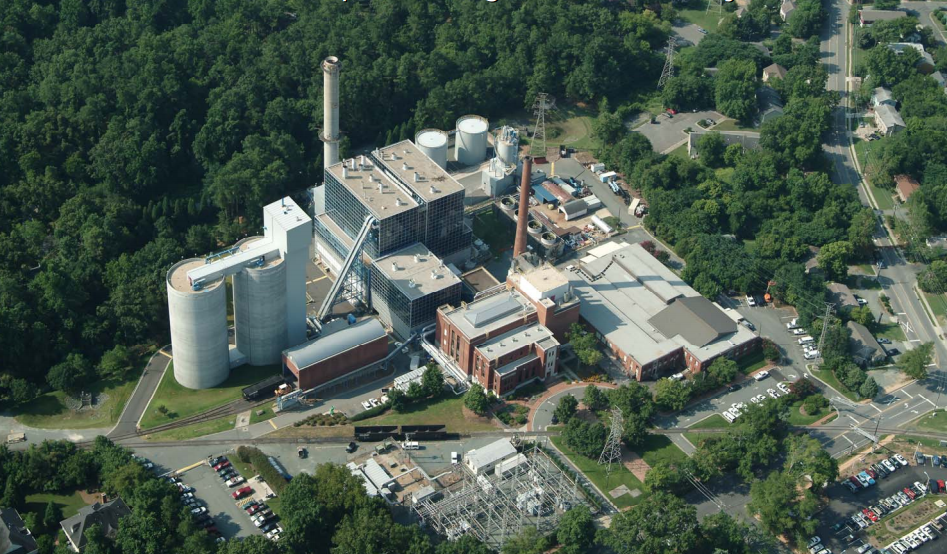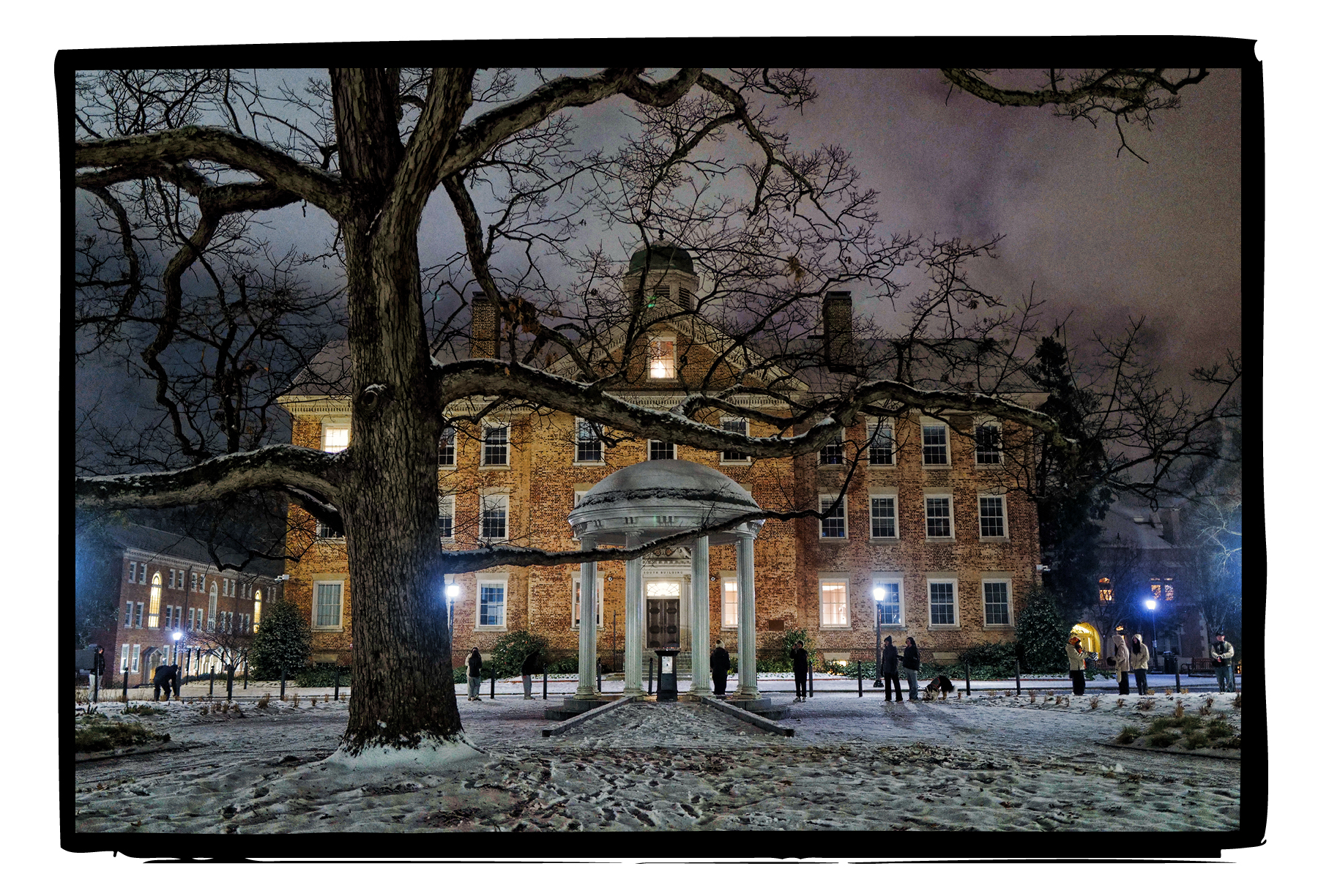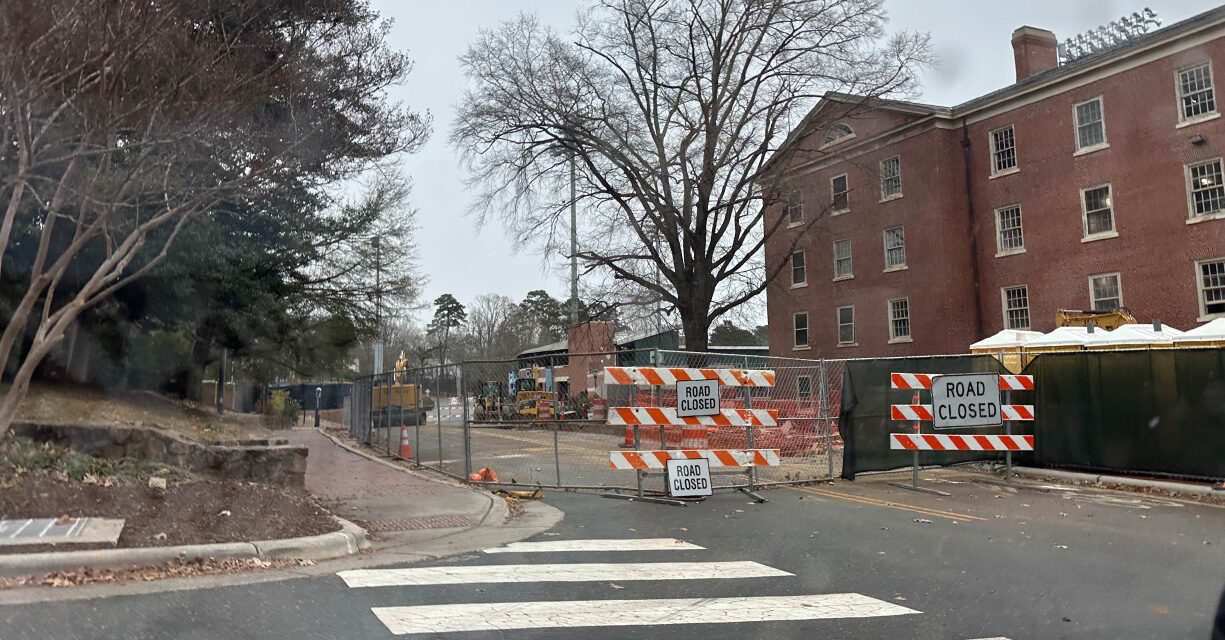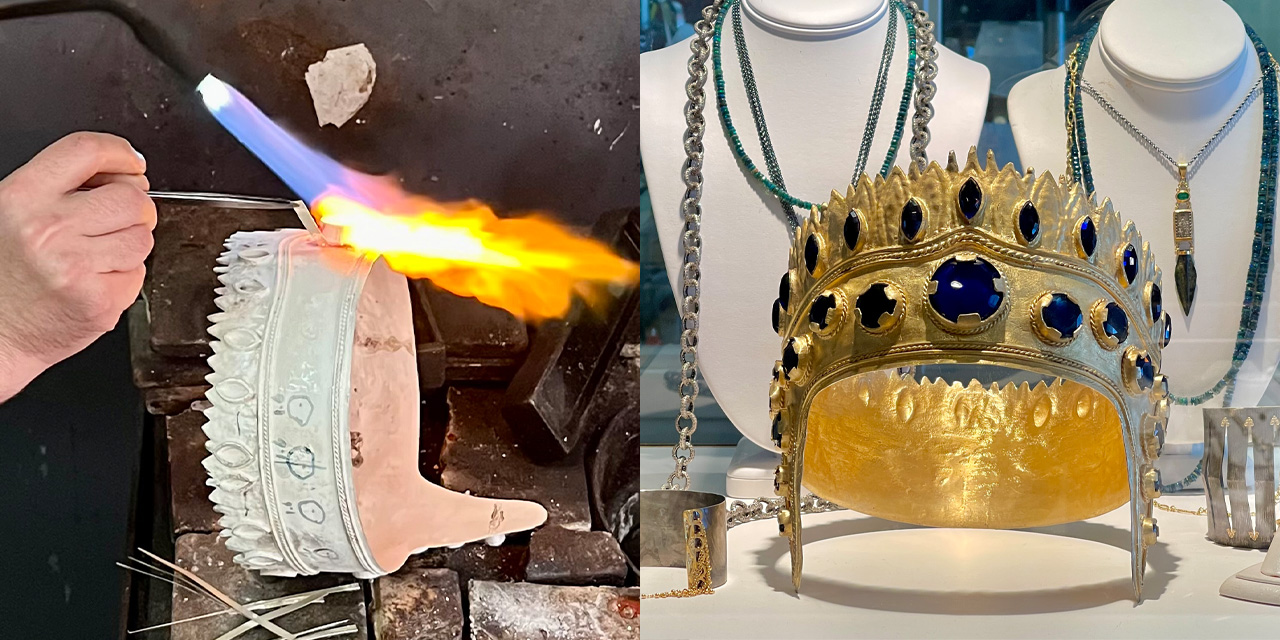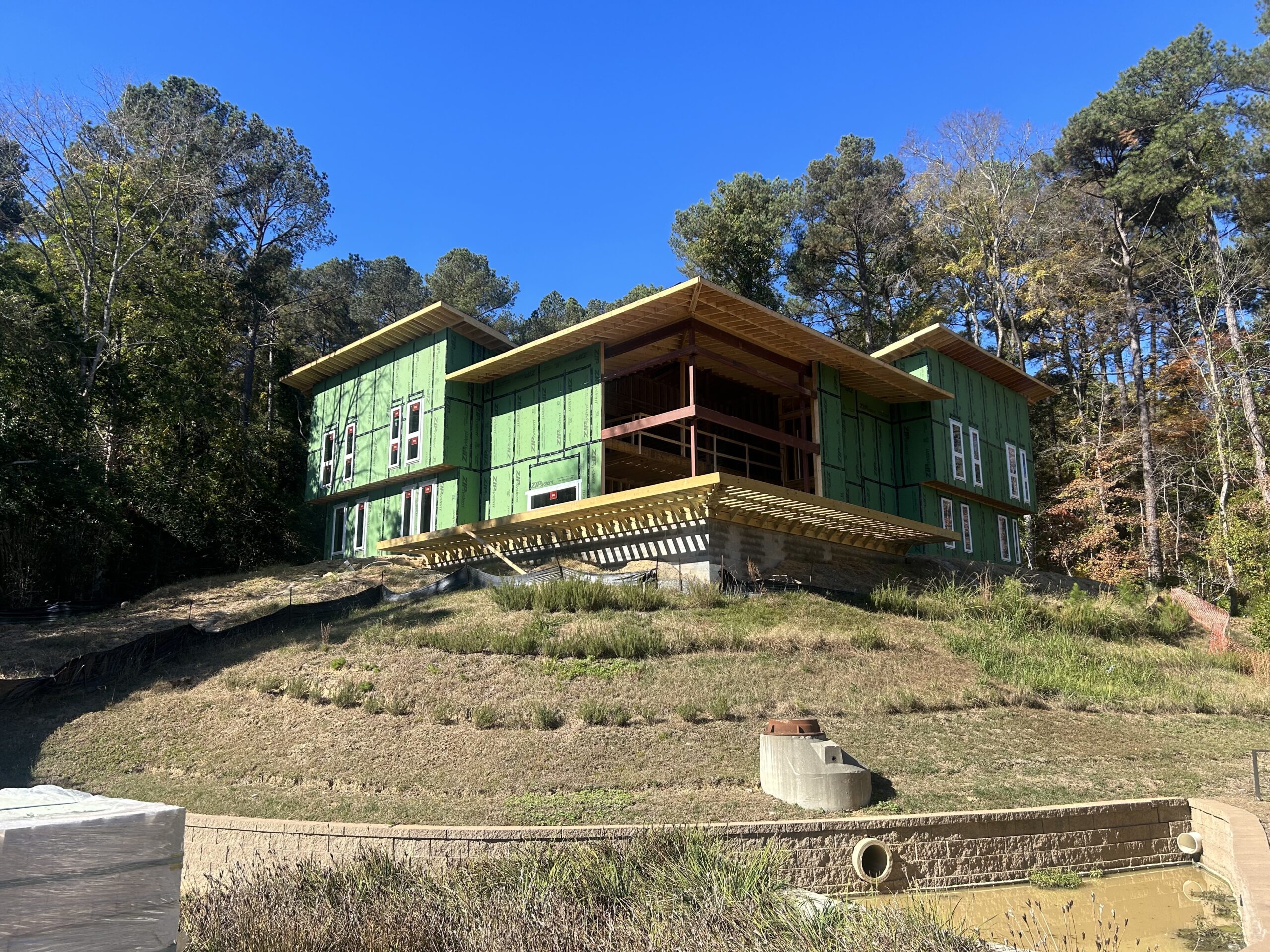When Chris Francis describes his hobby to you, he might say it’s both strange and addicting.
“It’s what I look forward to,” he says. “I get fired up like a kid going to Christmas morning on Saturdays to go build with these guys. I enjoy it more than riding bikes, which is weird because I’ve been riding bikes my whole life.”
Francis and his group of trail builders, called Trail Science, head out into the woods each weekend to dig new paths for mountain bikers. A Chapel Hill-based entrepreneur most days, Francis started the initiative nearly two years ago with Jeff Knight, a fellow local mountain biker. It started with some single trails and now Trail Science, which sees around ten volunteers show up each weekend, is working to complete a trail system for the Carolina Outdoor Education Center.
“We’ve just been able to aggregate this group of folks from all walks of life and it’s really cool,” says Francis. “For some reason, they like to come out here and get dirty, muddy and sweat a lot. It’s hard to understand, it’s super hard work and you couldn’t get paid enough for it. But it’s functional artwork and you’re basically at the gym.”
As Francis describes it, Trail Science balances hard work well with fun. After each day of working on a trail section, the team break out their bikes to test it out. Often, the afternoons end with drinks or dinner together near the trail site.
On this day, the group is working on Phase 2 of the trails on the 67-acre land, which surrounds the Chancellor’s Residence and used to be home to the Chapel Hill Country Club.
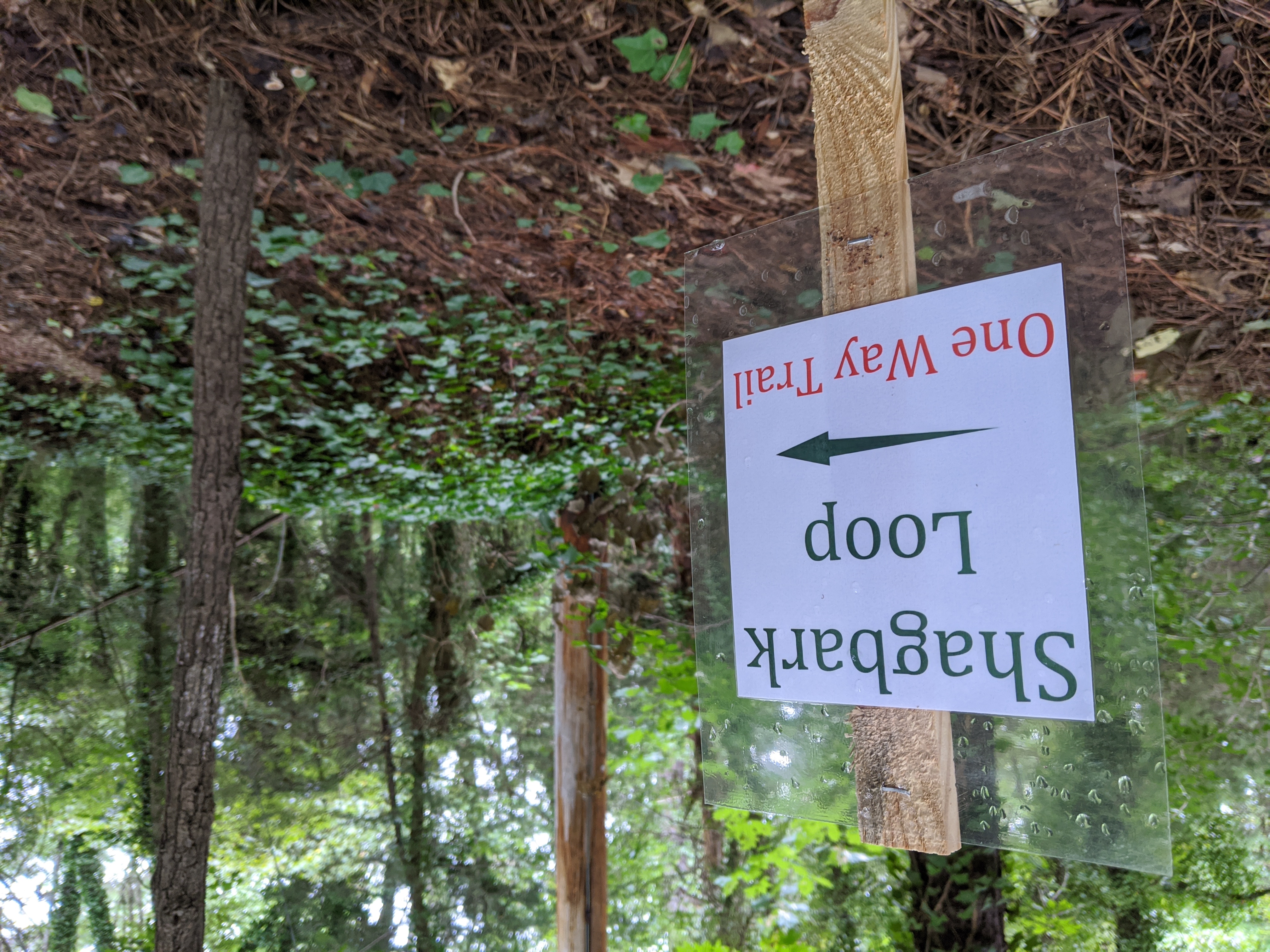
With names like Shagbark Loop and Hillbilly Hollar, the mountain bike trails at the Carolina Outdoor Education Center offer something for riders of all experience.
Knight is raking a mix of soil and gravel onto a freshly rooted area. He says it was the mountain biking aspect of the region that led him to move back here.
“People wouldn’t really think of Chapel Hill as being a great mountain biking area,” Knight says. “But there are lots of [sanctioned] trails people are allowed to use that you can easily get to in five minutes in any direction from the center of town.”
Described as the “trail architect” of the group, Knight has been digging out dirt to create paths for many years.
“Since I was a kid, I was building trails and berms in the woods and riding an old BMX bike on old motorcycle trails,” he says. “I loved the experience.”
Trail Science’s building pattern is largely dictated by the land features in place. The group works entirely by hand, using simple machinery over professional trailblazing tools to preserve the existing woodland. That means it takes many months instead of weeks to dig up roots and underbrush, build features and lay down new soil.
For the current 2.6-mile trail system, the features vary so riders of all experiences can take them on. Beginners can hit the trails at a slower pace and avoid some features, while regulars can challenge themselves with jumps and more.
Jonah Robison features some riders testing out the trails on Trail Science’s social media pages. Having moved to the Triangle after finishing college in South Carolina, he was looking for a way to both continue mountain biking and volunteer. He said the philosophy of “no dig, no ride” is important in the biking community.
“People want you to get out and sweat,” he says. “You have a different connection to the trails you ride when you’ve put time into it and you can say ‘I built this jump, I put this rock feature in, I fixed this drainage issue here. These trails ride so much cooler now that I’ve put in work with my friends.’”
As he found about Trail Science and began coming to trail building days, Robison says he wanted to showcase their work. By running their social media accounts, he says he gets to not only participate in fulfilling activities but share them with others.
“There’s something to be said for volunteering at the food shelter and making donations to the Red Cross, Habitat for Humanity, that sort of [organization],” says Robison. “But I think any aspect of volunteerism is even more impactful when it’s something you’re truly passionate about. It’s so easy for me to lose track of time and put in hours out here, then go and develop our community message further through social media.”
Francis says many parts of the trail system at the Carolina Outdoor Education Center are open for riders now. Parts still being constructed will be roped off. But if you walk or bike by on Saturdays, you’ll hear music playing, some laughter and lots of digging.
All in a day’s work for the Trail Science team.
Chapelboro.com does not charge subscription fees. You can support local journalism and our mission to serve the community. Contribute today – every single dollar matters.

